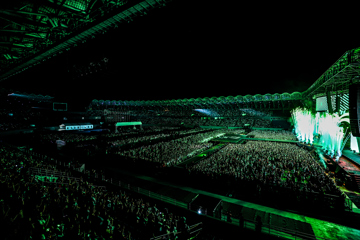Exploring The Moments That Matter
"I started thinking about the times we might remember at the moment of our death."
There is something entirely appropriate about the fact that Natalie Weir's dance work When Time Stops begins with a frozen moment; namely, a picture. As she recalls, "I saw this painting by Arnold Bocklin that inspired the composer Rachmaninoff to write Isle Of The Dead. It's a picture of the ferryman rowing [a soul] across to the island to set it free. I thought that was a beautiful notion and I started thinking about the times we might remember at the moment of our death."
When it debuted in 2013 When Time Stops won over punters and pundits alike and it remains one of Brisbane-based Expressions Dance Company's most loved works. Its remount this month, like its painterly wellspring, has an air of metaphoric design. "As a small company we don't remount that often but this was something I felt strongly that I wanted to bring back," Weir explains. "It's been beautiful to come back to because, y'know, hindsight is a great thing."
"It's not about death, it's about life well lived. A life where the woman has loved and been loved."
Given that the work begins with a woman on her death bed, hindsight is very much at the core of the piece. As she lies in extremis she remembers, among other things, her first kiss, a potential car accident and a woman being resuscitated. "It's not depressing. It's actually quite beautiful," Weir insists. "It's not about death, it's about life well lived. A life where the woman has loved and been loved. I see it as more poetic, maybe even romantic."
Don't miss a beat with our FREE daily newsletter
Mortality is always going to ring bells with audiences, (even if they're not fully fledged existentialists). As Weir says, "It's such a great big juicy concept." More than that though, it allows significant latitude for the audience. "I wanted to approach it kinda like a painting," Weir adds. "There are things you can see that are real but also, like when you goes to view a more abstract painting, you bring some of your own personality to the work. So yeah, I've left space for people to make up their own ideas."
As the work's creator and the Artistic Director of Expressions, Natalie Weir gets to exercise a privilege that her central 'character' does not. She gets to go back and revise outcomes. However, the 2016 version of When Time Stops will not radically depart from its 2013 original. Some cast changes have necessitated choreographic tweaks but the most notable update comes in the form of the 12-piece ensemble, Camerata Of St John's, playing a revised score live on stage.
Indeed, composer Iain Grandage has augmented his Helpmann Award-winning original music, and Weir has made the players more visible. "They're on stage and moving throughout the work, so they're quite integrated," she reveals. "They're not only expected to play beautifully but walk and play at the same time. So that does change things a bit but they respond to the dancers and the dancers respond to them."
Combined with the work's 'life flashing before your eyes' motif, Grandage's string-driven score is designed to stir. "The score is very emotional, with that soaring violin and haunting cello. It's a work that tries to make people move and think and feel," Weir elaborates. "It's beautiful, physical and sad, but also happy."







